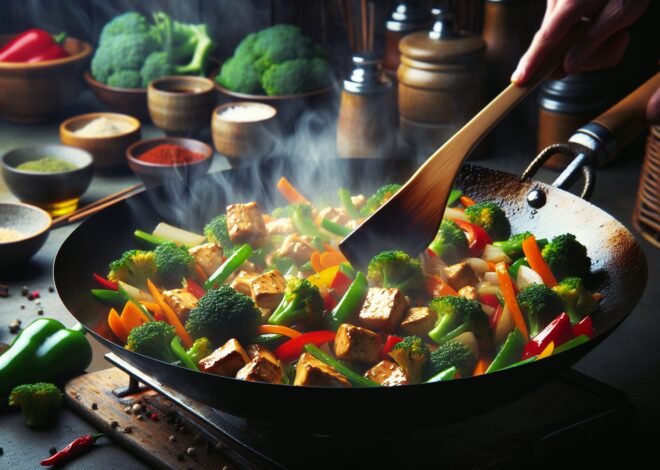
Best Tips for Measuring Ingredients for Sauces and Dressings
Measuring ingredients for sauces and dressings is crucial for achieving the perfect balance of flavors. Studies show that a teaspoon too much or too little can significantly alter the taste. This post will guide you through essential tips to precisely measure your ingredients, ensuring delightful consistency every time. From understanding proper techniques to utilizing measuring tools effectively, we will delve into strategies that chefs and home cooks alike can master. By understanding these fundamentals, your sauces and dressings will elevate any dish they accompany.
### Best Practices for Accurately Measuring Ingredients for Sauces and Dressings
Measuring ingredients accurately is a crucial step in crafting perfect sauces and dressings. Even minor errors can alter the flavor, texture, and consistency of your final dish. Understanding the right tools and techniques for measuring ingredients is essential. This section delves into effective strategies to ensure that every measurement is precise, leading to culinary success every time.
#### Essential Kitchen Tools for Measuring Liquids and Solids
Having the right kitchen tools makes a world of difference in achieving precise measurements. For liquids, use **liquid measuring cups** with spouts that allow for easy pouring without spills. These are usually marked in both ounces and milliliters, which is handy for following different recipes. **Measuring spoons** are a must-have for smaller quantities of both liquids and solids. They come in sets and are often color-coded for quick identification.
When it comes to measuring dry ingredients, opt for **dry measuring cups**. These cups are designed to be filled to the top and then leveled off with a straight edge for accuracy. A **digital kitchen scale** is invaluable for both liquids and solids, offering precise weight measurements in grams or ounces. This tool is particularly useful for ingredients that are difficult to measure by volume, like nuts or cheese.
**Key Tools:**
– Liquid measuring cups
– Measuring spoons
– Dry measuring cups
– Digital kitchen scale
#### Common Mistakes to Avoid When Measuring Ingredients
Avoiding common measurement mistakes can be the difference between a successful dish and a disappointing one. One frequent error is using the wrong type of measuring cup. Liquids should not be measured in dry measuring cups because volume markings differ. Another mistake is not leveling off dry ingredients, which can lead to excess amounts.
**Overpacking ingredients** such as flour or sugar in a measuring cup is another pitfall. It’s important to spoon these ingredients into the cup and then level off. Using inaccurate tools, like measuring spoons that aren’t standardized, can also cause discrepancies. Lastly, ignoring the temperature of ingredients can lead to incorrect measures, especially for things like butter.
**Mistakes to Watch For:**
– Using the wrong measuring cup
– Not leveling dry ingredients
– Overpacking the measuring cup
– Using non-standardized tools
– Ignoring ingredient temperature
#### Tips for Measuring Thick and Viscous Ingredients
Thick and viscous ingredients pose unique challenges in measuring. For such ingredients, using a silicone spatula can help scrape every bit from the measuring cup or spoon. When measuring sticky substances like honey or molasses, coat the cup or spoon with a thin layer of oil to prevent sticking.
For precise measurements, place the container on a scale and zero it out before adding the ingredient. This method is especially useful for ingredients like peanut butter. When measuring these types of ingredients, patience is key. Allow time to fill the measuring tool properly and ensure all air bubbles are eliminated for accuracy.
**Helpful Techniques:**
– Use a silicone spatula for scraping
– Coat measuring tools with oil for sticky ingredients
– Zero out the scale before adding ingredients
– Eliminate air bubbles for better accuracy
### Understanding the Importance of Precise Ingredient Measurements in Dressings
Precision in measuring ingredients for dressings goes beyond just getting the quantities right. It impacts the flavor, texture, and overall culinary experience. This section explores how accurate measurements contribute to achieving the perfect dressing, enhancing every dish they touch.
#### Impact of Accurate Measurements on Flavor Balance
The balance of flavors in a dressing is delicate and can be easily disrupted by incorrect measurements. Every ingredient, whether salt, vinegar, or herbs, plays a role in achieving the desired taste profile. Over- or under-measuring can result in an overpowering or bland dressing.
By using the correct measurements, each ingredient can shine, creating a harmonious blend of flavors. Consistency in measuring also allows for repeatable results, ensuring that each time you make the dressing, it has the same delightful taste. Accurate measurements help maintain the balance between acidity, sweetness, and saltiness, which is critical for a well-rounded flavor.
**Flavor Balance Factors:**
– Correct salt and vinegar ratios
– Proper herb measurements
– Balanced sweetness and acidity
– Consistency in taste
#### How Precision Affects Texture and Consistency
Texture and consistency are as important as flavor in dressings. The viscosity of a dressing should match its intended use. A thicker dressing might be ideal for dipping, while a thinner consistency works best for drizzling over salads. Precise measurements ensure these textures are achieved as intended.
Inaccurate measurements can result in a dressing that’s too runny or too thick, altering how it coats the food. Ingredients like oils and thickeners have specific roles and require precise amounts to achieve the right consistency. Using a digital scale can help measure these ingredients accurately, preventing unwanted textural changes.
**Texture and Consistency Considerations:**
– Matching texture with intended use
– Avoiding runny or overly thick outcomes
– Accuracy with oils and thickeners
– Achieving desired viscosity
#### Scaling Recipes: Adjusting Measurements for Serving Size
Scaling recipes is often necessary when cooking for different numbers of servings, and doing so with accuracy is vital. Adjusting ingredient quantities while maintaining the recipe’s integrity requires careful calculation. Doubling or halving a recipe involves more than simple arithmetic, as the relative impact of each ingredient can change.
Tools like a calculator or a recipe conversion chart can be helpful. Additionally, when scaling, pay attention to seasoning, as flavors can intensify disproportionately. Test scaled recipes before serving them to ensure the adjustment hasn’t altered the intended flavor profile.
**Steps for Scaling Successfully:**
1. Use a calculator or conversion chart
2. Adjust seasonings cautiously
3. Consider the impact of scaling on flavors
4. Test recipes before serving
### Expert Tips for Consistent Ingredient Measurement Success
Achieving consistent results in cooking requires not just the right tools but the right techniques. This section offers expert advice on methods and considerations for measuring ingredients with precision, ensuring consistent culinary success.
#### Choosing the Right Measuring Method for Each Ingredient
Different ingredients call for different measuring methods. Understanding the right approach for each type is essential for accuracy. Solids like flour and sugar are best measured using the scoop-and-level method with dry measuring cups. Liquid ingredients require a liquid measuring cup, filling to the desired mark at eye level.
For ingredients that are difficult to measure by volume, such as cheese or nuts, a digital scale provides the most accurate results. Consider the ingredient’s properties and choose the appropriate method to measure it precisely. This not only improves accuracy but also makes the cooking process more efficient.
**Measuring Methods:**
– Scoop-and-level for dry ingredients
– Eye-level measurement for liquids
– Digital scale for tricky ingredients
– Tailoring the method to the ingredient
#### The Role of Temperature in Measuring Ingredients Accurately
Temperature can significantly affect ingredient measurements. Cold ingredients, like butter, can be difficult to measure accurately due to their hardness. Allow them to reach room temperature for easier and more precise measurements. Conversely, certain liquids expand with heat, potentially leading to incorrect measurements if used at varying temperatures.
Using ingredients at a consistent temperature ensures that every measurement is reliable. It’s also crucial during baking, where ingredient temperature can impact the chemical reactions. Ensure your ingredients are at the right temperature before measuring to maintain recipe accuracy.
**Temperature Tips:**
– Bring cold ingredients to room temperature
– Measure liquids at consistent temperatures
– Understand temperature impacts in baking
– Ensure reliable measurements through temperature control
#### Effective Techniques for Weighing vs. Volume Measurement
Weighing and volume measurements serve different purposes in cooking. Weighing ingredients provides the highest accuracy and is often preferred in baking for its precision. A digital scale is essential for this method, allowing for precise measurements in grams or ounces.
Volume measurement, on the other hand, is more common in everyday cooking and is quicker for less precise recipes. Understanding when to use each method is crucial for success. Use weighing for ingredients where precision is key, and reserve volume measurements for quicker tasks where slight deviations are acceptable.
**Weighing vs. Volume:**
– Use a digital scale for precise measurements
– Choose volume for everyday cooking
– Understand the context for method choice
– Combine both methods strategically for best results
Adopting these practices in your cooking routine will not only improve your accuracy but also enhance your overall culinary experience. With these insights, measuring ingredients accurately for sauces and dressings becomes a seamless process, leading to consistently delicious results.
Conclusion
The article discusses the importance of accurately measuring ingredients for sauces and dressings to ensure consistency in flavor and texture. It emphasizes using the right tools, such as measuring spoons and cups, for precision. Key ingredients often need specific measurements, like oils, acids, and seasonings, to balance taste. The piece also highlights the impact of over- or under-measuring on the final product. Tips are provided for adjusting measurements according to the recipe scale and personal preferences.
“`html
FAQ
What are the best measurement techniques for sauce ingredients?
Use standard measuring cups and spoons for precise measurements. For liquids, a clear measuring cup with a spout ensures accuracy. Dry ingredients should be leveled off with a straight edge for consistency.
How can I accurately measure dressing ingredients for consistent flavor?
Balance liquid and dry ingredients using the correct measuring devices. For strong flavors like vinegar or mustard, measure carefully to maintain balance. Consistency in measuring ensures repeatable flavor profiles.
What tools are essential for measuring ingredients in homemade dressings?
Invest in a set of measuring spoons, liquid measuring cups, and a kitchen scale. These tools offer precision and help in achieving the desired taste and texture in dressings.
Tips for measuring ingredients when making large batches of sauce?
Scale up measurements proportionally, using a kitchen scale for accuracy. Consider using larger measuring tools to accommodate bigger quantities, ensuring even blending of flavors.
How do I adjust measurements for sauces when substituting ingredients?
Understand the flavor and texture differences between substitutes. Adjust quantities to maintain the sauce’s intended consistency. Experiment with small adjustments and taste as you go.
Why is precise measurement important for sauce and dressing recipes?
Exact measurements ensure flavor consistency and quality. Variations in ingredient proportions can drastically alter the taste and texture, affecting the overall dish experience.
“`











